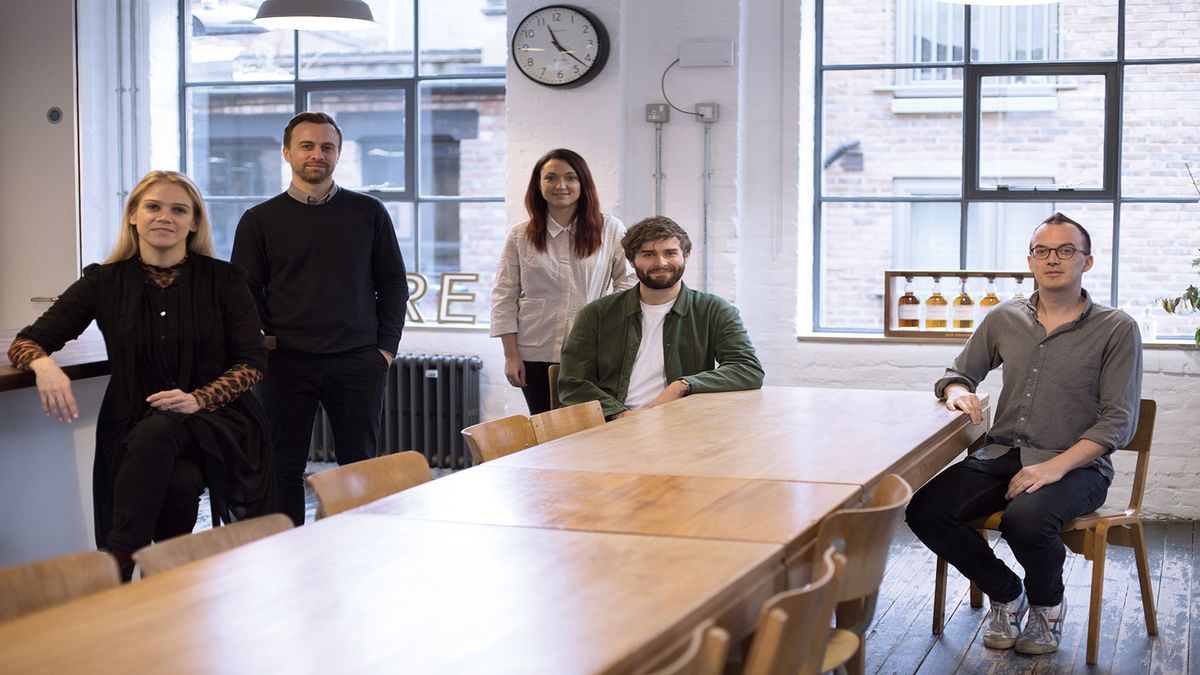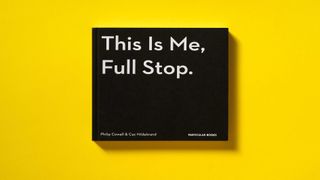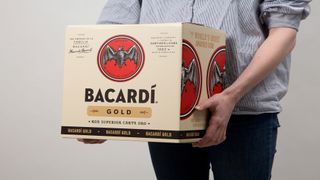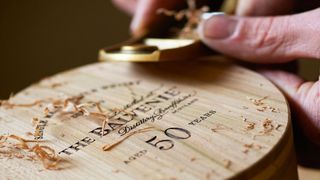How to excel at everything
How Here Design built a truly multidisciplinary studio.

Product design, packaging design, branding and book publishing are all well-established disciplines, filled with plenty of specialist, single-focus agencies. So for a relatively small studio to excel in all of them at once is rather impressive, but Here Design has managed it.
East London agency Here is also notable in the male-dominated realm of creative directors in that two of its three co-founders are women. Driven by a shared passion for creativity in all its forms, Caz Hildebrand, Kate Marlow and Mark Paton continue to fly the flag for multidisciplinary design. We asked Paton and Marlow to tell us more...
How was Here Design founded?
Mark Paton: We didn’t have a written ethos, or any precise definition of what to do. We just shared a broad interest in food and drink, and sharing knowledge. Caz wanted to do furniture design; Kate was interested in textiles; I was doing other things. Initially it was about sharing infrastructure. We had an accountant in common, and just wanted a nice, creative environment to work in. It was really unstructured.
Kate Marlow: It was 12 years ago now. We left our respective jobs: Mark and I were in branding; Caz in publishing, in book design. We wanted to work together in a small environment, designing for brands we believed in.
As Mark says, there was no master plan, no big idea. We got on well, and had a shared ethos about what good ideas were, and how to articulate them.
How did the studio evolve?
MP: It’s been super-organic, and a huge learning curve: we’ve had to learn about all of decisions we should have made at the beginning. Early on, we pitched to rebrand an organic food shop, and surprisingly we won. That suddenly gave us a body of work that we were working on together, which crystallised the nature of the studio and how we could share our experience.
KM: As it went on, we got more jobs in than we could cope with just three of us. So, we slowly employed people to help us and it grew very, very slowly. For a very long time, we did all our own project management, finance, everything. We were the receptionists too.We learnt what we could and couldn’t do very well. Thankfully we now have experts in areas like finance, and a head of studio. They do a much better job than we ever did.

How have you structured the agency?
MP: This year we’ve employed a new tier of designer in the studio: design associates. We have four now, each with a portfolio of clients.
We’ve struggled a bit to create a structure without being very hierarchical. We don’t buy into certain job titles. For us, it was important to create our own definition. T
he design associates will take more of a lead on certain projects, while the partners focus on developing the business, thinking about new sectors, and also some smaller projects. It may seem a bit counter-intuitive, but we still want to design, so are happy to pick up speculative work that’d be a burden for the studio to do.

Have you struggled to stay hands-on?
KM: No, in fact we’ve probably struggled to be hands off. We need to learn to do that more, so the other designers can work their way up.
We’re passionate about all our projects, and as partners we lead teams and are really collaborative with the design associates and senior designers, right through to the juniors.
How have you stayed multi-disciplinary?
MP: We have had conversations about whether we need to specialise, but I think part of what makes Here interesting is that we work on such different topics. We very pragmatically believe that if a designer works across a book, a pack, an identity and a digital application, they will become a better designer.

How do you choose who works on a project?
KM: Sometimes, one of us is just a really good fit for a client. That might be based on personality, or previous experience – or it might be that one of us actually hasn’t got much experience in that field, and that’s what we find exciting. They could come up with things you wouldn’t necessarily think to do, because they don’t know that genre so well.
Do you work with external collaborators?
MP: A lot is done in-house. At college you didn’t have the option to commission someone: you had to get your paints out and do it. We advocate the guys having a go, but there are instances where it’s beyond us, so we commission out. But the lion’s share of illustration, for instance, is done in-house.
It’s partly a cultural choice: it’s nice to have people making marks and creating images. It makes for a richer experience.

How do you attract and retain the right talent?
MP: From the moment we started in Caz’s kitchen, we recognised the importance of the moments that weren’t designed. Making lunch together was a bonding experience, which sounds a bit cheesy, but it was important.
We came from quite ordered environments, and wanted it to feel more homely and casual. When we were lucky enough to design this space, a creative kitchen was the first thing we set up. On a Friday, everyone tries to have lunch together and different people cook.
The strength of the studio is the people within it. It’s not really us as partners – we are not necessarily the embodiment of the company. We’re just kind of trying to create a way of working that everyone can benefit from.
Recognising people and allowing them to flourish –almost autonomously – is another thing that happens here that maybe doesn’t elsewhere. A junior designer can come in, be given a live project and see it through. We review things democratically too, so there’s an opportunity for everyone to speak up. I think that openness, and the fact that the opportunities are quite apparent and quite quick, makes people stick around. A lot of people have been here for a long time – we’re very lucky.
This article originally appeared in issue 277 of Computer Arts magazine, the world's best-selling design magazine. Buy issue 277 or subscribe to Computer Arts.
Related articles:

Thank you for reading 5 articles this month* Join now for unlimited access
Enjoy your first month for just £1 / $1 / €1
*Read 5 free articles per month without a subscription

Join now for unlimited access
Try first month for just £1 / $1 / €1
Get the Creative Bloq Newsletter
Daily design news, reviews, how-tos and more, as picked by the editors.

Nick has worked with world-class agencies including Wolff Olins, Taxi Studio and Vault49 on brand storytelling, tone of voice and verbal strategy for global brands such as Virgin, TikTok, and Bite Back 2030. Nick launched the Brand Impact Awards in 2013 while editor of Computer Arts, and remains chair of judges. He's written for Creative Bloq on design and branding matters since the site's launch.